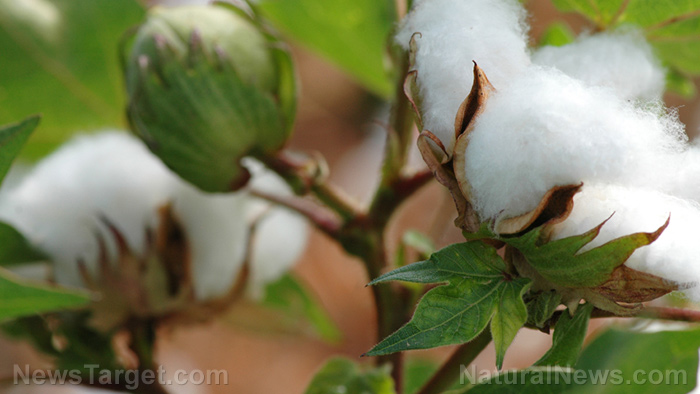Researchers have recycled clothing waste into an “aerogel” supermaterial that can help stop wound bleeding
03/11/2018 / By Frances Bloomfield

Cotton-based fabric waste has a multitude of uses that range from being recycled into polishing and wiper clothes to automotive insulation. Though, as researchers from the National University of Singapore (NUS) have discovered and demonstrated, this type of waste could be turned into cotton aerogels that have their own practical applications.
The cotton aerogels, which are comprised of cotton and cellulose and coated with chitosan, are a marked improvement over the paper waste aerogels that the team had previously worked on. According to Dr. Hai Minh Duong, an associate professor at the Department of Mechanical Engineering, the cotton aerogels possess various desirable qualities such as being ultralight, highly compressible, and stronger. All these properties combined make them more suitable to mass production.
“It is highly compressible, hence storage and transportation costs could be greatly reduced. Furthermore, these cotton aerogels can be fabricated within eight hours — this is nine times faster than our earlier invention and about 20 times faster than current commercial fabrication processes. They are also stronger, making them more suitable for mass production,” said Duong.
Of the cotton aerogel’s uses, Duong and his colleagues have found the material to be highly effective at controlling bleeding and insulating heat. (Related: Using cannabis, scientists discover inexpensive way to dramatically boost battery storage potential.)
Because they’re biocompatible, each aerogel pellet can be integrated into existing hemorrhage control devices with little issue. Once administered, the cotton aerogels can expand to up to 16 times their original size in less than five seconds — all without compromising their structural integrity. Moreover, the rapid expansion and absorption rates of the cotton aerogels make them more effective at controlling bleeding than cellulose-based sponges.

“The unique morphology of the cotton aerogels allows for a larger absorption capacity, while the compressible nature enables the material to expand faster to exert pressure on the wound,” explained Duong.
As for their potential as heat insulation, the team worked together with DSO National Laboratories to come up with a thermal jacket for military canteens. The resulting product was a 200-gram insulating material that could maintain the near-freezing temperatures of crushed ice and liquid water for over four hours. The jacket’s insulating capabilities were noted for being at par with that of vacuum flasks and better than commercial insulated water bottles. However, the jacket is lighter and much cheaper to produce than either of these bottles, making it more advantageous for soldiers engaging in strenuous physical activities.
Beyond these, the team sees the cotton aerogels having numerous other commercial and industrial uses. “The heat insulation property of the novel cotton aerogels can be applied to various consumer products, such as cooler bags to keep food items fresh,” said Dr. Nhan Phan-Thien.”We also foresee tremendous potential for other high value applications, such as pipeline insulation and transportation of liquefied natural gas which needs to be stored at a low temperature.”
The team has already filed a patent for their creation, and is in the middle of seeking out companies to work with. Should the cotton aerogels gain the backing they need for commercialization, they could very well pave the way for future aerogel technologies. Aerogels are some of the most advanced materials in the world. Unfortunately, their high production cost has put off most industries from making use of them. This is a fact that the NUS team, and many others around the globe, are attempting to change.
Fast facts on cotton
- Although a biodegradable natural fiber, cotton is one of the most environmentally damaging and demanding crops in the world.
- About 25 percent of the world’s insecticides and 10 percent of pesticides are utilized by the cotton industry. Organic cotton is available, though it’s much pricier than regular cotton.
- A single cotton t-shirt can demand as much as 700 gallons of water.
Feel free to go to Environ.news to read up on more news stories regarding the environment.
Sources include:
Submit a correction >>
Tagged Under:
This article may contain statements that reflect the opinion of the author





















